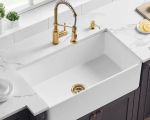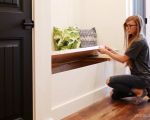- 1-Preparing-for-Range-Hood-Installation
- 2-Tools-and-Materials-Needed
- 3-Step-by-Step-Installation-Process
- 4-Common-Installation-Challenges-and-Solutions
- 5-Professional-Tips-for-a-Successful-Installation
1. Preparing for Range Hood Installation
Before you start installing a new range hood in the kitchen, preparation is key. First, identify the type and size of the range hood compatible with your stove and kitchen layout. Measuring the area accurately helps ensure a perfect fit. Additionally, turn off the power supply to the kitchen to avoid any electrical hazards during installation.
Also, consider ventilation options: ducted hoods require connecting to an external vent, while ductless hoods use filters to recirculate air. Deciding this beforehand saves time and helps gather the correct materials.
1.1 Understanding Your Kitchen's Ventilation Needs
Choosing between a ducted or ductless system depends on your kitchen’s structure and your cooking habits. Ducted systems are more efficient at removing smoke and odors but require venting through walls or ceilings. Knowing this impacts how you’ll approach the installation.
2. Tools and Materials Needed
Gathering the right tools and materials beforehand streamlines the installation process. Common tools include a drill, screwdriver, measuring tape, wire stripper, level, and safety gear such as gloves and goggles.
Materials often needed are mounting brackets, ducting (if ducted), electrical wiring, and sometimes wall anchors. Having everything on hand helps avoid interruptions during your DIY project.
3. Step-by-Step Installation Process
Follow these detailed steps to install your new range hood efficiently:
3.1 Remove the Old Range Hood
Start by carefully disconnecting the power and detaching the old hood. This step requires attention to avoid damaging the walls or electrical connections.
3.2 Mark and Drill Mounting Holes
Use a level to mark precise holes for mounting brackets on the wall or under cabinets. Drilling at the right spots ensures stability.
3.3 Install Mounting Brackets and Attach the Hood
Securely fix the mounting brackets, then lift and mount the new range hood. Assistance might be helpful here to handle the weight and alignment.
3.4 Connect Electrical Wiring
Follow the manufacturer’s instructions to connect the electrical wires safely. If unsure, consult a licensed electrician to avoid risks.
3.5 Attach Ductwork or Filters
For ducted models, connect the ducting to the external vent, ensuring airtight seals. For ductless, install the appropriate charcoal or grease filters.
3.6 Test the Range Hood
Restore power and test all functions, including fan speeds and lights, confirming everything operates correctly.
4. Common Installation Challenges and Solutions
Many homeowners face issues like mismatched duct sizes, improper mounting heights, or wiring complexities. For example, if the duct size differs from your hood, adapters are available to bridge the gap without compromising airflow.
Another common hurdle is ensuring the hood is mounted at the correct height — typically 24 to 30 inches above the cooking surface — to balance effective ventilation with safety.
5. Professional Tips for a Successful Installation
Experts recommend carefully reading the installation manual and double-checking all measurements before drilling. Using a helper can ease heavy lifting and alignment tasks.
Additionally, for those uncertain about electrical work or venting paths, consulting professionals can prevent costly mistakes and ensure compliance with local building codes.
Upgrading your kitchen with a new range hood not only improves air quality but also adds value and comfort. For the best products, trusted advice, and installation accessories, visit Improvement, where you’ll find everything you need to complete your kitchen upgrade confidently.








